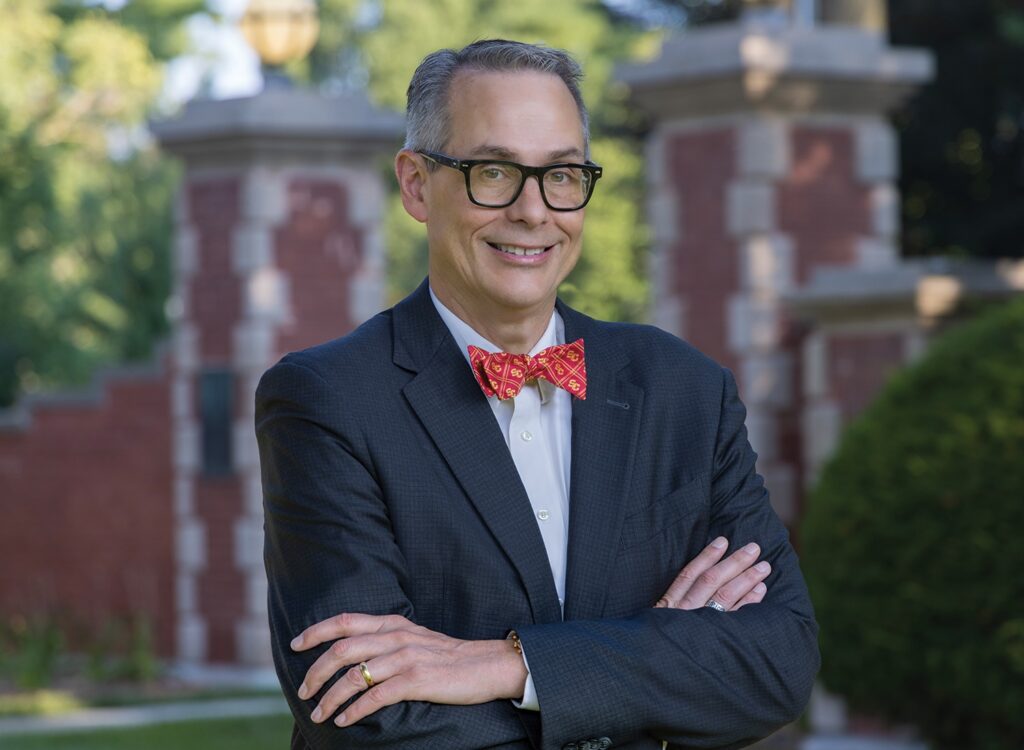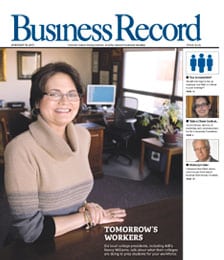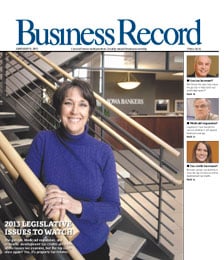Emerson extends commitment to Marshalltown

You could say the engineers at Emerson Process Management in Marshalltown have high-stress, high-pressure jobs, and they’ll probably take that as a compliment. After all, the more stress and pressure they can apply to the components they’re testing, the better the design and the performance of the company’s Fisher Valve products.
Inside the vibration laboratory in the company’s sprawling flow-control and testing center, for instance, a technician can strap a valve assembly onto a shaker table that generates up to 4,500 pounds of shaking force, enough to determine whether the assembly will withstand the stress of an earthquake when it’s buried in the ground.
In the center of the facility, dozens of color-coded pipes, some as large as 18 inches in diameter, snake through a football-field-plus-sized room. There, engineers shoot highly pressurized air or water through these miniature pipelines at rocket-like speeds to determine how the computerized valve assemblies will perform.
Now, they’re going to kick it up a notch.
In April, Emerson, the world’s largest manufacturer of control valves, will begin construction of its new Fisher Technology Development Center. The $19.2 million project will renovate and expand the company’s former factory building adjacent to its downtown Marshalltown office complex into a next-generation research and testing laboratory.
“We selected Marshalltown because we’ve been successfully running a lab since the 1930s,” said Neal Rinehart, Emerson’s director of performance technologies. “The skills and expertise that are needed are here. This will be fourth generation of flow lab that will be here.”
Emerson, a division of St. Louis-based Emerson Electric Co., purchased Fisher Controls International LLC in 1992. The company employs just under 1,100 people in Marshalltown, of which nearly one-third are professional engineers. The company expects to initially hire 15 more engineers as it expands its technology center, and expects continued growth in Marshalltown. The new facility and hiring is Emerson’s response to booming demand from the energy industries, which are calling for increasingly higher-capacity pipelines and valves, Rinehart said.
“Gas-to-liquids, liquefied natural gas, deep-water oil production and super-critical (high-temperature steam) power plants are all areas where we’re seeing tremendous demand,” he said. “In general, the large-valve energy market is growing at least twice as fast as the general-service valve market, and it’s also one that has a high amount of risk involved with it. So the need for testing is there.”
The new facility, expected to encompass approximately 230,000 square feet, will allow Emerson to test valves twice as large – connecting pipes big enough for someone to crawl through. Replacing a facility built in 1971, the new center will also continue Emerson’s role as a leader in major research and development. During the past 15 years, engineers at the Marshalltown center have been awarded approximately 160 patents.
A year in planning, the new technology center was largely designed with in-house expertise, among them one of the engineers who designed the current facility 36 years ago. Working with engineers who have been with the company for 30 or more years are the next generation of electrical, mechanical, computer and even aerospace engineers from top Midwest universities.
The fact that Fisher is building a new world-class research and testing facility is a valuable recruiting tool, said Paul Gregoire, the company’s vice president for human resources.
“The people we are hiring are going to be able to replace some of these world-class people who will be retiring,” Gregoire said.
In November, Emerson was awarded five years of Enterprise Zone tax credits totaling nearly $2.2 million by the Iowa Department of Economic Development. To receive the credits, the company must create at least 15 additional positions paying annual salaries averaging more than $53,000.
“We’re really at the point where we’ve got to start handing things over to the next generation,” said Nile Dielschneider, Fisher’s manager of test and evaluation, who joined the company in 1976. “The other big challenge for the designers: This facility was built in 1971 and it’s still a state-of-the-art facility today. The challenge for us is to do the same. … It’s kind of the exciting part of it.”







